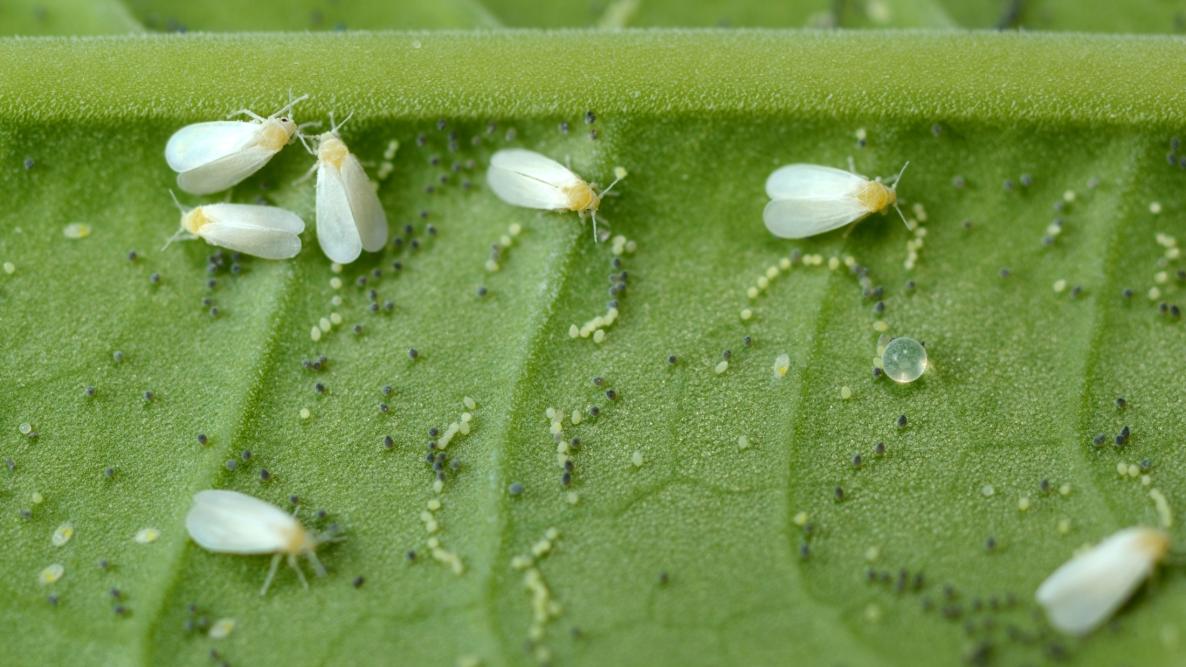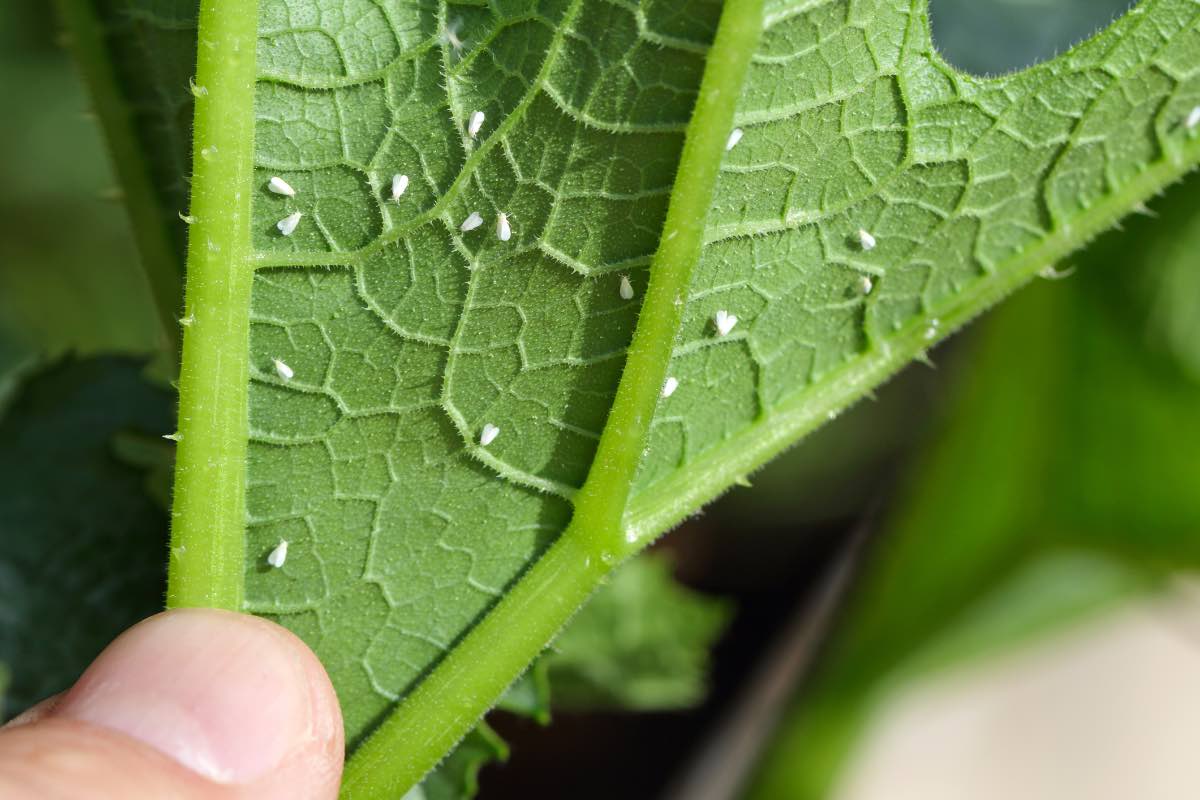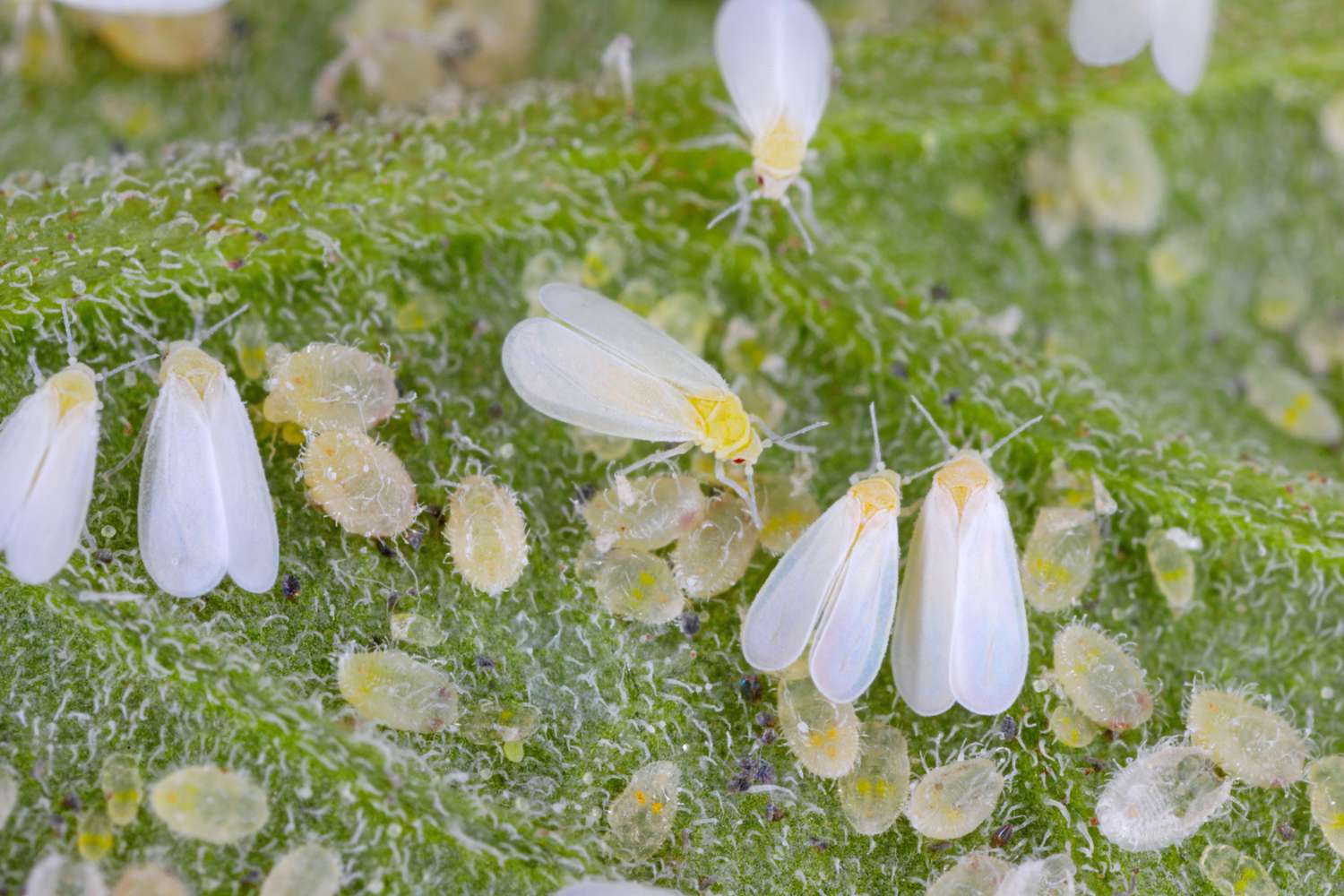White Flies: How To Prevent and Get Rid Of Them
Whiteflies can be a persistent and troublesome pest for gardeners, causing damage to a wide range of plants. These small, winged insects feed on plant sap, leaving behind sticky residue and weakening the overall health of the plants. Preventing and getting rid of whiteflies is essential to protect the vitality of your garden.
What Are White Flies?
Whiteflies are tiny insects that, despite their name, are closely related to aphids and mealybugs. These soft-bodied creatures have wings and measure only 1/16th of an inch in length. They can often be gray-white in colouring with a somewhat triangular shape.
Whiteflies feed on plant sap, which can be harmful to plants as it causes leaf damage and other problems. Due to the small size of these pests, they can easily go undetected.
How To Prevent White Flies
Are you tired of seeing your beautiful plants plagued by pesky whiteflies? These tiny, white-winged insects can wreak havoc on your garden, leaving your plants weak and vulnerable. But fear not, fellow green thumbs! In this comprehensive guide, we'll dive deep into the world of whiteflies and explore effective strategies to prevent these unwanted invaders from taking over your garden.
Keep Plants Healthy
The key to keeping plants healthy is proactive maintenance and regular care. Proper watering, pruning, fertilizing, and other tasks should be done on a regular basis to ensure that the plant remains strong and continues to thrive.
In addition, it is important to inspect plants regularly for any signs of possible disease or pests. Identifying problems quickly can help you take appropriate steps to address them before the situation spirals out of control.
Inspect New Plants
Inspecting new plants is an important step in caring for your garden, and should never be overlooked. Before bringing any plant home from the nursery, it’s crucial to thoroughly examine it for any signs of pests or disease.
It only takes one infested plant to spread its problems to the rest of your garden, so taking a few moments to check can save you time and money down the road.
Check Plants Regularly
Regularly checking your plants is one of the most important steps in maintaining a healthy garden. While tending to regular gardening chores such as watering and nutrients, make it part of your routine to inspect all plants in the garden.
Doing this can help you detect any potential problems early on, so they can be addressed promptly and with appropriate solutions. For best results, focus on those plants that are especially vulnerable to disease or pests when checking regularly.
How To Recognize The Presence Of White Flies
Whiteflies are small bugs that can be found around the world, and they’re considered one of the most destructive pests of greenhouse and garden crops. They measure between 1-2 millimetres long, have wings, and mostly congregate near the undersides of leaves. These tiny creatures feed on plant sap, which results in weakened plants that put out fewer flowers and produce less fruit.
In order to identify whiteflies, start by keeping an eye out for signs of their presence such as withered leaves or yellow spots on healthy foliage. You should also look for clusters of them settling beneath leaves; they tend to feed together in groups so this is a strong indication that your plants are being attacked.
Take care to inspect your entire garden with magnifying glass if you suspect a whitefly infestation as it's easy to miss them among other harmless bugs like aphids or mealybugs. Finally, check for sticky residue or honeydew at the base of your plants as this is something that’s unique to whitefly infestations.
With just a little vigilance and awareness of these tell-tale signs, it's possible to recognize when these minute invaders have infiltrated your flowerbeds or rows of vegetables.
Identify Whitefly Damage
Whiteflies can cause damage to plants in similar ways to aphids, which is why it is important to identify and treat them at the earliest signs of infection. Both the whitefly and the aphid have piercing-sucking mouthparts that extract plant sap, leading to foliage damage and stunted growth.
As sucking continues, a sticky substance known as honeydew is secreted by the pests, contributing to the spread of fungal diseases such as black sooty mold. When left unchecked, whiteflies can quickly move on from just causing discoloration and wilting leaves to an even more dangerous problem.
Plants may lose their leaves entirely as they are unable to perform photosynthesis due to heavy infestations of whiteflies. These infestations stunt further growth and weaken plants drastically.
It is very important for those with gardens or potted plants indoors to identify whitefly infestations before serious damage occurs in order to protect their plant life from harm.
Plants Susceptible To White Flies
Whiteflies are one of the most common pests affecting many plants and crops. They feed on the sap, or phloem, of a wide variety of plants and can induce stress in the plant while interfering with photosynthesis and nutrient uptake.
Several food crops such as beans, brassicas, citrus, cucumber, eggplant, grape, okra, peppers, potatoes, squash and tomatoes are particularly susceptible to whitefly infestation. Even ornamental plants including hibiscus, poinsettia, roses and bedding plants like begonia, fuchsia, petunia and salvia can be victimized by these pesky insects.
The damage caused by whitefly infestations varies depending on the severity of their density as well as the type of plant affected.
White Flies On House Plants
Whiteflies are small insects that can become a serious problem for houseplants. These pests are often mistaken for miniature white moths and usually appear in large groups around the leaves of plants indoors.
Whiteflies will feed on most common varieties of houseplants, but they have a preference for smooth soft leaves which they can easily pierce with their mouthparts. This can lead to yellowing of the leaves, stunted growth, and even death if left unchecked.
Quarantine
Quarantine is an essential preventative measure to keep garden pests and diseases from spreading throughout your beloved plants. When introducing a new houseplant into the garden, it is important to isolate the plant for a period of two to three weeks. This quarantine period will allow you enough time to detect the presence of any potential whiteflies or other insects that may be harboring within the plant.
Vacuum Bugs Away
Vacuuming is one of the easiest and most efficient ways to deal with infestations of whitefly bugs. A small handheld vacuum cleaner or a hose attachment is perfect for sucking up bug larvae, eggs, and adults in an effort to reduce their numbers quickly.
Care must be taken when vacuuming plants, as improper use could damage the delicate foliage or leave plant debris in the vacuum bag. After vacuuming, it's important to dispose of the bag's contents outside in a sealed trash can. Doing so will help ensure that the bugs are not reintroduced back into your home or garden.
Use Sticky Traps
Sticky traps are an effective means of controlling troublesome insect pests in gardens, lawns and farms. These devices are designed to attract and capture harmful insects including aphids, whitefly, thrips and leafhoppers.
The most common type of houseplant sticky trap is the yellow ribbon or stake. When installed correctly, these traps can be a great addition to your pest management program as they disrupt the lifecycle of these pests by preventing them from reaching maturity and reproducing.
Insecticidal Soap
Insecticidal soap is an effective way to get rid of or control insect populations in a garden or around the home. The active ingredient in insecticidal soap is generally fatty acid salts, which work by dissolving the outer layer of the insect's exoskeleton, causing dehydration and death.
It's safe to use on plants as long as it's applied correctly according to the directions given on the label. To make your own homemade insecticidal soap, simply mix castile soap and horticultural oil together in a bucket of water at a rate of 1 teaspoon each per gallon of water.
Shake this mixture well and spray directly onto whiteflies on plants. Be careful not to spray any beneficial insects like bees since they can be killed as well.
Noam Oil
Neem oil is derived from the neem tree, a type of evergreen, and has been used traditionally for centuries in India. Today, it is commonly used as an environmentally-friendly pesticide on plants to help control pests and diseases.
It is an effective product for treating plant fungus and controlling leafrollers, scales, mealybugs, spider mites and other common garden insects. Neem oil can also be applied to human skin as an insect repellent or salve to treat dry skin conditions like eczema or psoriasis.
Types Of White Flies
Whiteflies are a small but serious type of insect pest that infect a wide variety of plants, including many indoor and outdoor crops. Until recently, greenhouse whitefly (Trialeurodes vaporariorum) was the most common species of whitefly that attacked greenhouse plants.
The adult forms of this species lay their eggs on the undersides of leaves and suck out the sap from the leaves. This causes infested leaves to become withered, yellow and eventually die off. Other common types include banded winged whitefly, citrus whitefly and giant whitefly.
Cabbage whitefly attacks brassicas such as cabbage, cauliflower and broccoli by laying their eggs in spherical masses on these plants' undersides and removing plant juices as larvae. Silverleaf whitefly also produces multiple broods per year with each one producing several hundred offspring.
When silverleaf whiteflies feed on squash foliage they cause it to transform into a silvery color, giving it its nickname in some areas - 'silver-leaves'.
Lifecycle Of White Flies
Whiteflies are incredibly common pests found all over the world, and they're known to cause severe damage to crop crops. The lifecycle of whiteflies begins with the adults laying their eggs on the underside of leaves in late spring.
In 5 to 10 days, these eggs hatch into nymphs which start crawling around looking for a place to feed. As they grow and mature, they go through several stages before reaching adulthood where they can lay more eggs, completing their lifecycle.
This process takes anywhere from 2 1/2 to 5 weeks and is sped up during warmer weather. Adult whiteflies can survive for 1 to 2 months and several generations may overlap in certain areas when conditions are favorable for reproduction.












